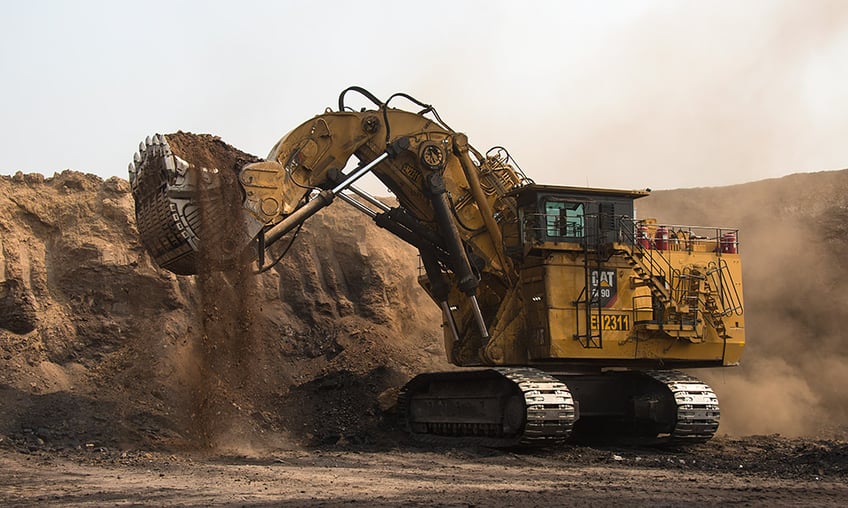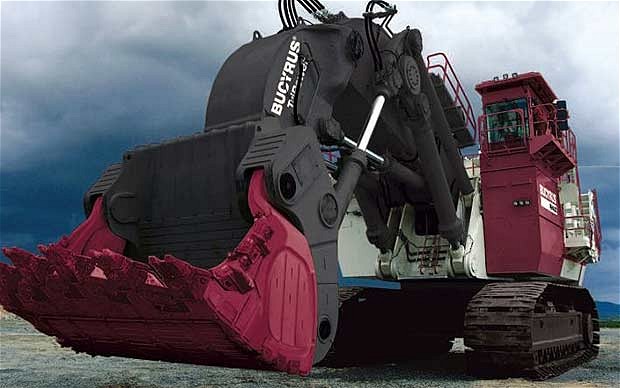In front of you is the world’s largest hydraulic excavator – an $11m machine that stands a full ten metres (33 feet) high and 8.6 metres wide. The record-breaking Bucyrus is used for many mining operations, including coal, copper, iron ore and oil sands; it is commonly found in Canada, but also has an underground coal mining specification.
The RH400 weighs an incredible 980tons and is powered by two turbo diesel engines with a maximum output of4,500bhp at 1,900rpm. Each is 60.2 litres in capacity and has 16 cylinders; they use two-stage turbocharging, after cooling and intercooling.
The engines power hydraulic pumps, which generate very high pressure oil for driving the track motors and moving the excavator rams. There are eight main pumps and six swing pumps. Forward drive is via axial piston motors on each side; each track is two metres wide and three metres high. The total hydraulic oil volume is 13,000 litres; an electronic Pump Managing System oversees the hydraulic sand incorporates fl ow-on-demand control.
Excavators are built of two distinct constructions – the undercarriage and the house, where the operator cab and boom reside. They fi t to the undercarriage using a centre pin, meaning they can rotate 360 degrees. A torsion-resistant 9.5m-long boom and 56m-long stick provides the excavation shovelling duties; the bucket is attached on the end. The RH400 has a bucket capacity of 50m3, and various specifi cations are available, depending on shovelling duties: iron ore, heavy rock, oil sand and standard rock confi gurations are offered. Up to 3,300kN of digging force can be generated.
It achieves considerable bucket load without signifi cant counterweights at the rear. This means it is relatively compact, which is an important consideration for use in space-restricted areas. The operator also has a comfy cabin with pneumatic seat and ergonomic joystick control system. The windscreen is armour plated and a safety switch is embedded inside the seat: when it senses it is unoccupied, all the hydraulic controls are automatically neutralised.











0 Comments